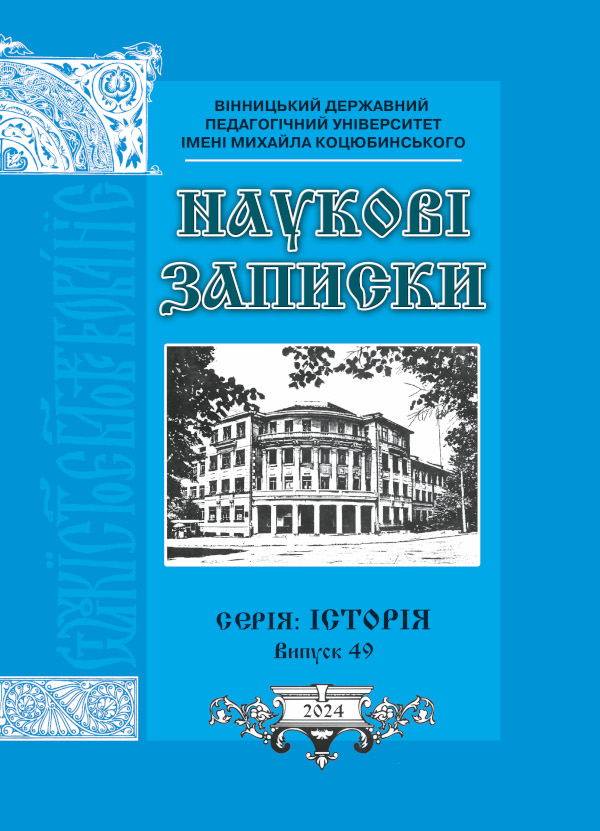Abstract
The purpose of the article is to examine the public activities of Béla Gencsy in 1956 in chronological, cause-and-effect order and in context, at the same time to present his positional range of motion at that time – as the former bishop of the Transcarpathian Reformed Church – which could have determined his ambivalent decisions. There research methodology is based on a combination of general scientific, special-historical and interdisciplinary methods. Due to the current research on the topic and the formulated aspects, we conducted primary source exploration, which above all means the usage of archival documents. The scientific novelty of the work lies in the fact that based on documents of the time – based on the events of the period under discussion – we explore Béla Gencsy’s role as a church leader and the areas of his activities in the year 1956. With the help of the archival materials at our disposal – beyond the dictated factocratic narrative of historical chronology – we took into account the guidelines of the former bishop's public actions and looked for their driving forces, which had not been examined in this context before us either in domestic or foreign historiography. Conclusions. It cannot be disputed in any way that after the defeat of the Hungarian revolution in 1956, the bishop Béla Gencsy wrote or signed the letter sent to the UN, in which he refuted the news about the deportation of the Hungarian insurgents to the Soviet Union. However, clear source evidence has not been found until today that whether he prepared the letter of his own accord, or whether he wrote or signed it on the instructions of the Soviet state security agencies. Attila Seres' statement is relevant to this issue, that it is not certain whether he could have done anything else in his position. It should also be noted that he never condemned the priests of the Hungarian Reformed Church who joined the revolution, or the statements of László Ravasz - the bishop of the Hungarian Reformed Church. On the other hand, it can also be ascertained that in the autumn and winter of 1956, he provided his ministers who were in Hungary during the revolution with the official background to the Religious Cult Affairs Council, and when they returned, he did not allow them into the state office until the Transcarpathian plenipotentiary representative ensured their impunity. In several cases, the revealed facts and events cast a different light on Gencsy himself and on the personality and judgment of the characters of the contemporary events.
References
Csarnai, M. (2019). A kárpátaljai magyar reformátusok kálváriája a sztálinizmus éveiben (1944-1953). In Évszázadok forgatagában: Keresztényüldözés - Krisztianizáció - Egyház. Fazekas F., Fedeles T., Nagy L. (szerk.). THE, Pécs, 122-124.
Csarnai, M. (2021). Református lelkészek kárpátaljai tragédiája. In Kényszerű rabság, kettétört sorsok, jelöletlen sírok: A GULAG-kutatás fehér foltjai. Konferenciakötet. A gulágokban elpusztultak emlékének megörökítésére alapítvány, Budapest, 54.
Egyetértés (1921). Egyetértés, május 28.
Fodor, G. (2016). A Kárpátaljai Református Egyház élete a sztálini egyházpolitika szorításában. In Molnár D. E., Molnár D. I. (szerk.): A kommunizmus áldozatai, rehabilitációs alternatívák Kelet-Közép Európában. II. RF KMF, Beregszász, 170-197.
Fodor, G. (2017). A református egyház első évtizede Kárpátalja szovjetizálásának idején (1944-1954). In Molnár D. E., Molnár D. I. (szerk.): Hadifogság, málenkij Robot, Gulág. Kárpát-medencei magyarok és németek elhurcolása a Szovjetunió hadifogoly- és kényszermunkatáboraiba (1944-1953). "Rik-U" Kiadó, Beregszász-Ungvár, 97-117.
Fodor, G. (2022). A Sztálinnak írt "levél" keletkezése és jelentősége a Napkeleti Baráti Kör lelkészeinek perében. In Erdős, K.; Szamborovszkyné Nagy, I. (szerk.): "Hívek maradtak bajban, vészben..." Fejezetek a Kárpátaljai Református Egyház 20. századi történetéből. Budapest, Nemzeti Emlékezet Bizottsága, Református Közéleti és Kulturális Központ Alapítvány, 61-90.
NCS (1942). Nép és Családvédelem, november 1.
RMH (1923). Ruszinszkói Magyar Hírlap, július 26.
Seres, A. (2017). A Kárpátaljai Református Egyház az 1956. évi magyar forradalom idején. Iratok a szovjet állami vallásügyi tanács archívumából 1956-1957. In Molnár D. E., Molnár D. I, (szerk.): Hadifogság, málenkij Robot, Gulág. Kárpát-medencei magyarok és németek elhurcolása a Szovjetunió hadifogoly- és kényszermunkatáboraiba (1944-1953). "Rik-U" Kiadó, Beregszász-Ungvár, 32-78.
SRF (1917). A Sárospataki Református Főiskola értesítője az 1916-1917-ik iskolai évről, Sárospatak.
SRL (1940/a). Sárospataki Református Lapok, április 21.
SRL (1940/b). Sárospataki Református Lapok, szeptember 15.
SRL (1941). Sárospataki Református Lapok, október 4.
ГАРФ - Государственный архив Российской Федерации.
ДАЗО - Державний архів Закарпатської області.
Капітан, Л. (2013a). А. Генче – очільник реформатської церкви Закарпаття. Наукові праці історичного факультету Запорізького національного університету, 1, 184-187.
Капітан, Л. (2013b). Реформатська церква Закарпаття у контексті антирелігійної політики радянської адміністрації повоєнних років. Гуржіївські історичні читання, 6, 240-244.
Лешко, О. (2002). Державна політика і протестантські громади Закарпаття в 1946-1949 роках. In Carpatika-Карпатика, 20, 105-114.
Лешко, О. (2003). Реформатське духовенство Закарпаття в другій половині 40-50-х роках. Науковий вісник Ужгородського університету. Серія: Історія, 9, 74-82.
Мазов, В., Пулях, А., Симакин, М., Черняк, И. (сост. сб.) (1957). О событиях Венгрии. Факты и документы, Москва, Госполитиздат, 283-284.
Самборовскі-Нодь, І. (2022). Зміни в організаційній структурі Закарпатської реформатської церкви (1946-1949). Україна: культурна спадщина, національна свідомість, державність / гол. ред. І. Соляр; НАН України, Інститут українознавства ім. І. Крип'якевича. Львів, 35, 174-185. http://doi.org/10.33402/ukr.2022-35-174-185
Ферков К.-Ш., Скиба І. (2018). Приборкання Реформатської церкви Закарпаття радянською владою в 1957-1964 рр. Науковий вісник Ужгородського університету. Серія: Історія, 2, 47-51.
Шерстюк, І. (2012). Закарпатська реформатська церква у перші повоєнні роки. Історична пам'ять, 28, 85-92.

This work is licensed under a Creative Commons Attribution 4.0 International License.
Copyright (c) 2024 Ibolya Szamborovszky-Nagy





